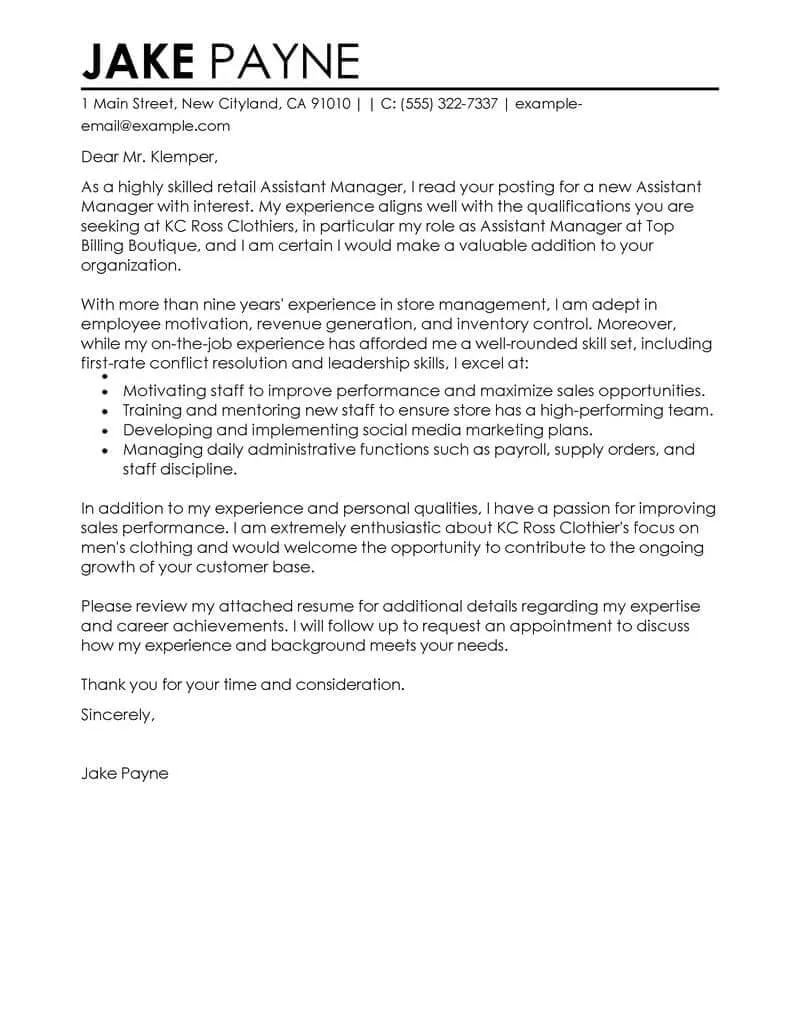What is a Cover Letter?
A cover letter is a crucial document that accompanies your resume when applying for a job. It serves as a personalized introduction, allowing you to highlight your skills, experience, and enthusiasm for the position. Think of it as your chance to make a strong first impression and persuade the hiring manager that you are the ideal candidate. Unlike a resume, which provides a factual overview of your background, a cover letter offers an opportunity to showcase your personality, communication skills, and understanding of the company’s needs. It provides context to your resume and helps you stand out from the crowd. Effective cover letters are tailored to each specific job application and demonstrate a genuine interest in the role and the organization. They should complement your resume, providing additional detail and selling your suitability for the position.
Why Cover Letters are Important for Managers
For managers, a well-crafted cover letter is even more critical. It’s an opportunity to demonstrate leadership qualities, strategic thinking, and a deep understanding of business operations. The cover letter allows managers to articulate their management philosophy, showcase their ability to lead teams, and highlight their accomplishments in driving business results. It provides a platform to explain how your leadership style and expertise align with the specific requirements of the role. A compelling cover letter can showcase your experience in a way that a resume cannot. For example, it’s the place to describe how you’ve handled complex projects, resolved conflicts, or implemented successful strategies that led to measurable improvements. A strong cover letter proves your attention to detail and commitment to excellence, qualities essential for any managerial role.
Key Elements of a Manager Cover Letter
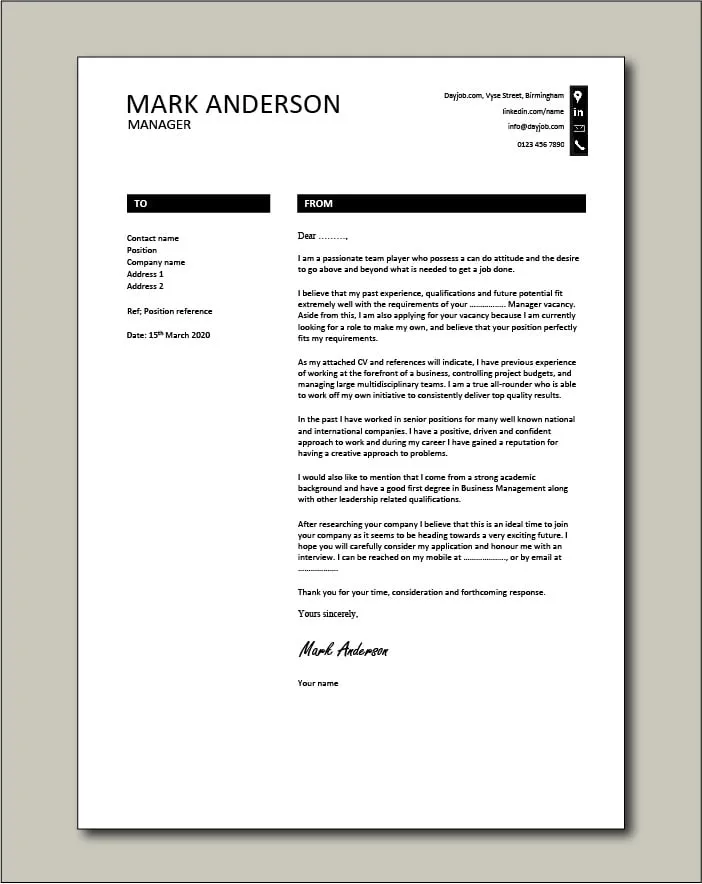
A manager cover letter should be structured to make a strong impact. The goal is to catch the reader’s attention immediately and convey your value proposition effectively. Consider the key components and how they each contribute to the overall message. A well-structured cover letter typically includes a header with your contact information, a professional greeting, an engaging opening paragraph, detailed body paragraphs showcasing your skills and achievements, a concise closing paragraph, and a formal closing. Each section serves a specific purpose in presenting your qualifications and demonstrating your suitability for the role. By focusing on these core elements, you can create a powerful cover letter that significantly increases your chances of landing an interview.
Header Section
The header should include your name, address, phone number, email, and optionally your LinkedIn profile URL. Ensure this information is accurate and easily accessible. This is the very first thing a hiring manager sees, so professionalism is key. Use a clear, easy-to-read font and layout. The header should provide immediate access to your contact information, enabling the hiring manager to reach you quickly and efficiently. Consistency in formatting is important for maintaining a professional appearance. Make certain that the contact information matches what’s listed on your resume, reinforcing a sense of organizational skills and attention to detail. This section is fundamental to a good first impression.
Professional Greeting
Address the hiring manager directly if possible. Research the company and find the name of the hiring manager or the person responsible for reviewing applications. ‘Dear Mr./Ms. [Last Name]’ is a professional approach. If you cannot find a specific name, use a generic greeting like ‘Dear Hiring Manager.’ Avoid overly casual greetings. Always address the recipient formally. Using the recipient’s name shows that you’ve taken the time to research the company and the role, which can leave a positive impression. It also demonstrates your attention to detail, an important characteristic for a manager. If you cannot find a specific name, make sure your greeting is still appropriate and professional, avoiding any language that might seem informal or impersonal.
Opening Paragraph
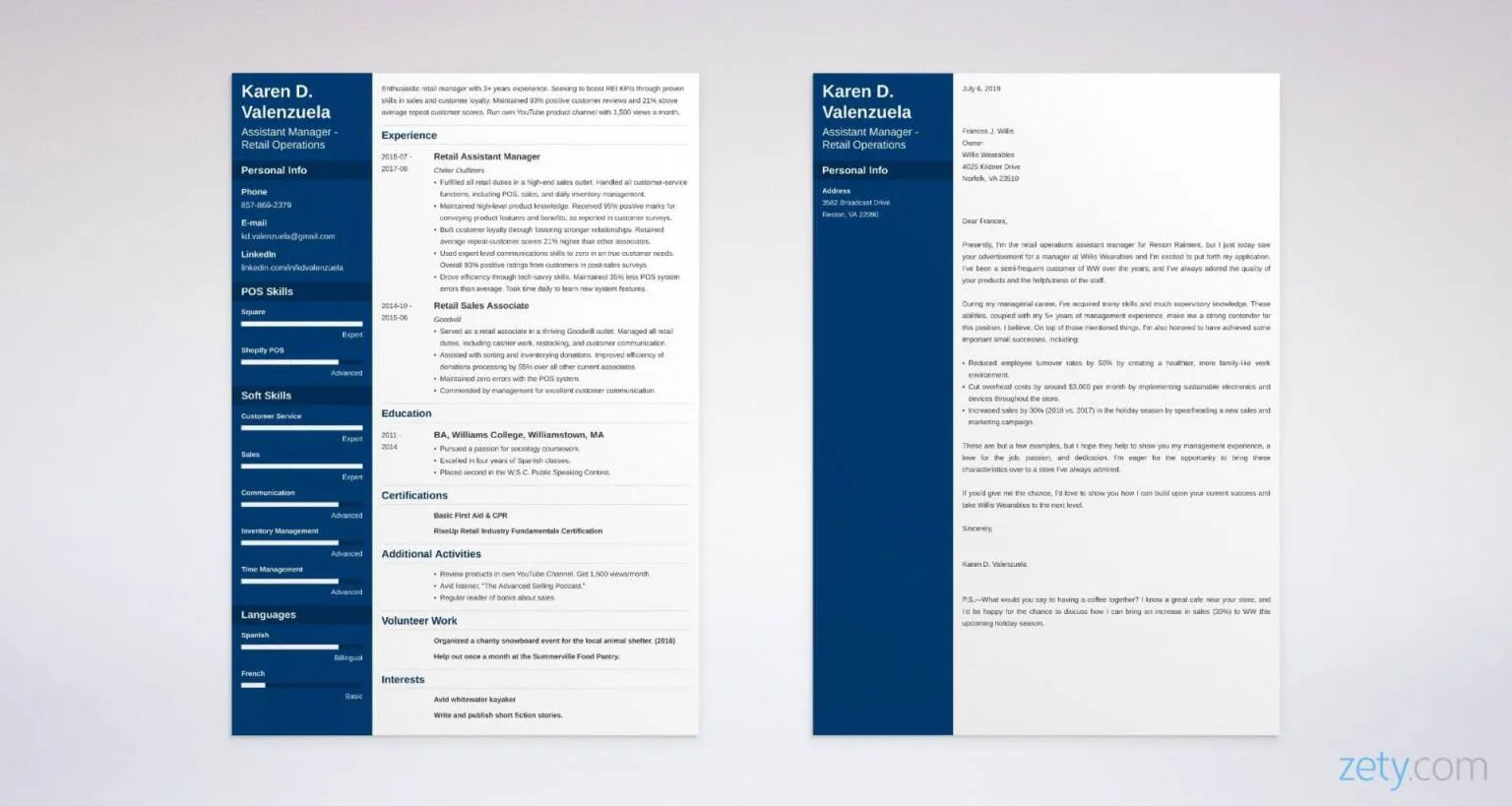
Start with a strong opening that captures the reader’s attention. State the position you are applying for and briefly mention why you are excited about the opportunity. Highlight a key achievement or skill that aligns with the job requirements. This initial paragraph sets the tone for the entire letter, so make it count. It should immediately convey your enthusiasm for the role and make the hiring manager want to read on. Instead of simply restating your interest, try to inject a touch of personality or a brief anecdote that highlights your relevant experience. Clearly state the position you are applying for to immediately clarify the purpose of your letter. Mentioning why you are interested in the company or role shows that you’ve done your research and you aren’t just sending a generic application. This shows you’re motivated.
Body Paragraphs
The body paragraphs are where you provide detailed information about your skills, experience, and accomplishments. Each paragraph should focus on a specific aspect of your qualifications. Use this section to demonstrate how your skills align with the requirements of the job. Discuss how you have used your skills to achieve results in previous roles. Provide specific examples and use the STAR method (Situation, Task, Action, Result) to illustrate your achievements. This shows the hiring manager what you can bring to their company. The STAR method helps you create compelling narratives that showcase your capabilities. The body paragraphs must also be tailored to each specific job application. Go through the job description carefully and address the requirements. Adapt your examples to show how your skills and experiences can contribute to the company’s success.
Highlighting Achievements and Skills
Focus on achievements rather than just listing your responsibilities. Use action verbs to describe what you did and the results you achieved. For example, instead of saying, ‘Managed a team,’ write, ‘Led a team of 15 employees, resulting in a 20% increase in productivity.’ Showcasing quantifiable results makes your accomplishments more tangible and persuasive. Skills should be presented in a way that demonstrates how you have used them in practical situations. It’s not enough to list skills; explain how you have applied them to solve problems, improve processes, or achieve business objectives. Focus on skills the employer has listed as important, as that shows you have the qualifications they’re looking for. Ensure the achievements are relevant to the job and the company. Show how your past accomplishments have directly benefited previous employers.
Quantifying Achievements
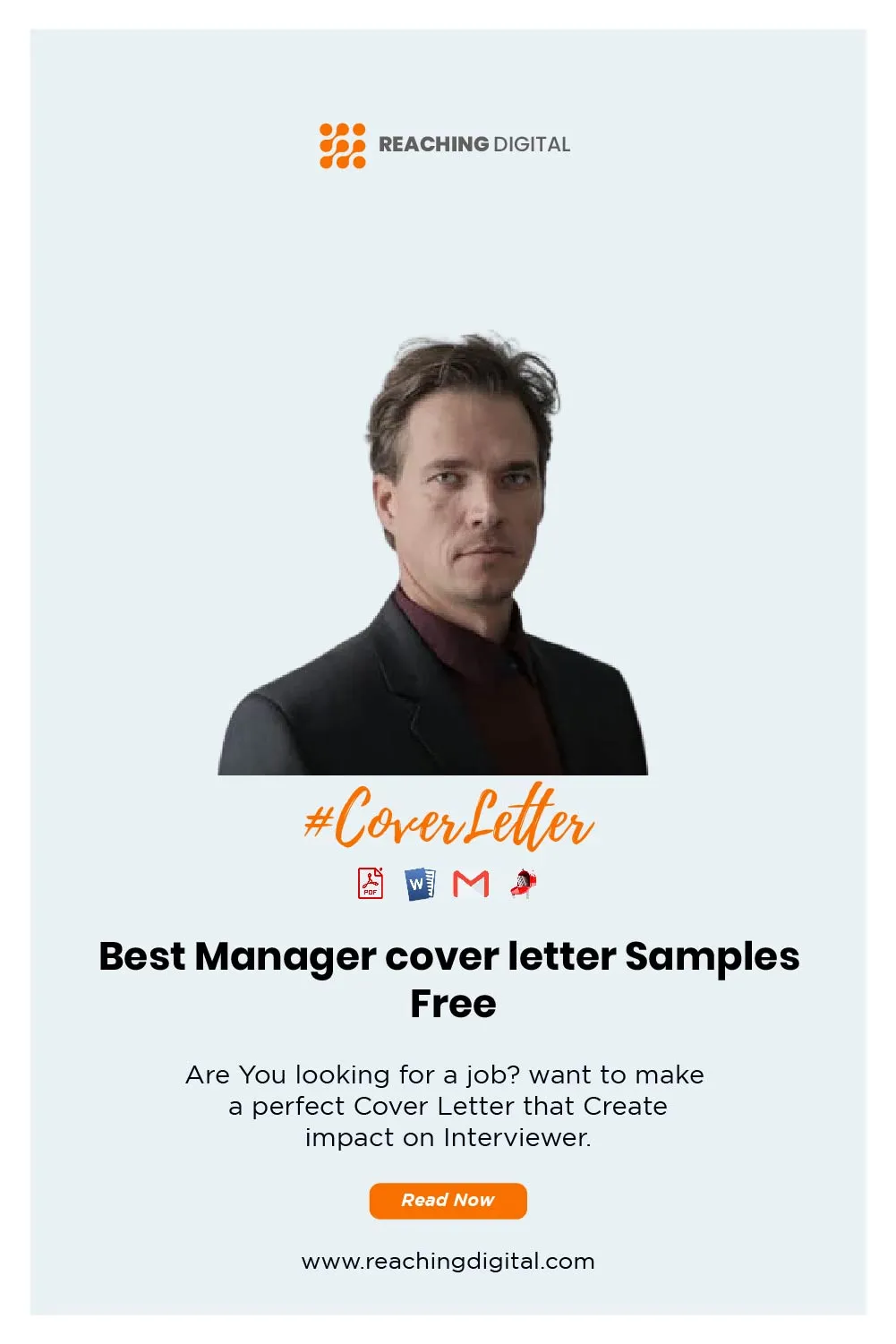
Wherever possible, quantify your achievements with data and metrics. Numbers add credibility to your claims and make your achievements more impactful. For instance, ‘Increased sales by 15% in one quarter’ is far more compelling than ‘Improved sales.’ Include specific numbers to demonstrate your impact. Use percentages, dollar amounts, or other measurable data to showcase the results of your work. Using data shows the specific effect that you had on a company. Mentioning things like budget size that you managed or the number of employees that reported to you are other examples of quantifiable achievements. Quantifying achievements makes it easier for hiring managers to compare candidates and understand the value you bring to the table. It is also a testament to your ability to assess and improve business performance.
Tailoring the Letter to the Job
Customize your cover letter for each job application. Review the job description carefully and highlight the skills and experiences that match the requirements. Use keywords from the job posting. Show that you understand the company’s needs and how your skills and experiences can benefit them. Make it clear that you have taken the time to understand the specific role and the company. Demonstrate your research into the company and what it does. Showing your ability to match their requirements shows your suitability. This approach significantly increases your chances of making a strong impression. Tailoring demonstrates your genuine interest in the position and shows that you have considered the specific needs of the employer. This makes your application more likely to stand out from generic submissions.
Closing Paragraph
In the closing paragraph, reiterate your interest in the position and express your enthusiasm. Summarize your key qualifications and thank the hiring manager for their time and consideration. Include a call to action, such as stating your availability for an interview. Keep the closing brief and professional. The closing should offer a final opportunity to leave a positive impression, summarizing your key qualifications and reiterating your enthusiasm for the role. This is your last chance to make a strong statement, so make it count. End with a clear call to action that prompts the hiring manager to contact you. Make it easy for them to proceed with the next steps.
Formal Closing
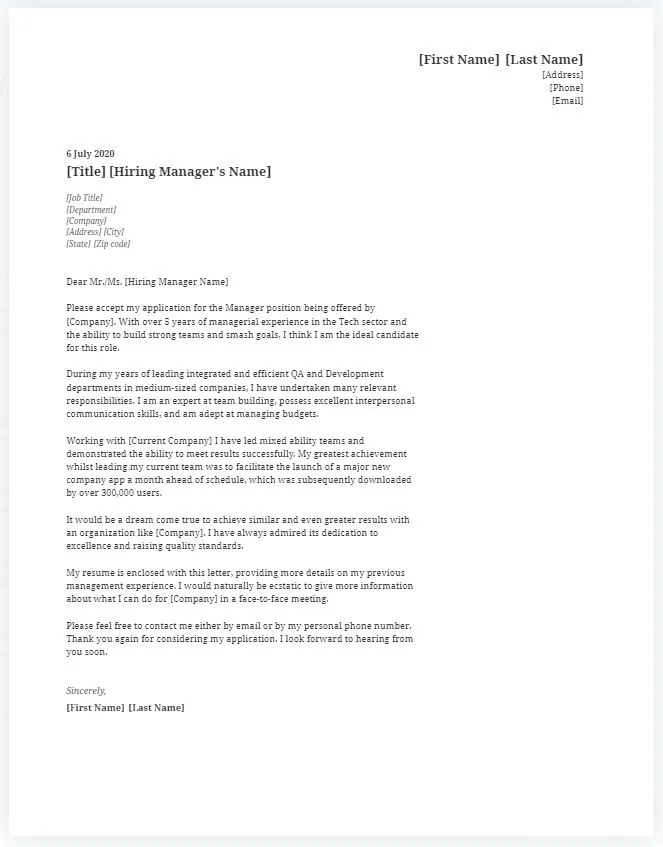
Use a professional closing such as ‘Sincerely,’ ‘Regards,’ or ‘Best regards.’ Avoid informal closings like ‘Thanks’ or ‘Cheers.’ Make sure your closing is consistent with the tone of your entire cover letter. Proofread it for any errors. The formal closing is the final gesture of professionalism. It demonstrates your attention to detail and respect for the hiring manager. The choice of closing should align with the overall tone of your letter, ensuring a cohesive and professional presentation. Always double-check that you have signed your letter and that your contact information is correct. The formal closing also sets the tone for future communications with the company. This provides a positive last impression.
Contact Information
Ensure your contact information is accurate and up-to-date, including your phone number and email address. Make it easy for the hiring manager to contact you by providing correct contact details. Ensure you are available at the provided contact number and that your voicemail greeting is professional. Always proofread your contact information to ensure there are no typos. Providing accurate contact information makes it easier for employers to reach out. Making it easy to reach you can increase your chances of getting an interview. This is particularly crucial because a single mistake can prevent the employer from contacting you. Proofreading ensures that the potential employer has the means to reach you.
Cover Letter Samples Manager Types
Different managerial roles require different cover letter approaches. Tailor your cover letter to the specific type of management position you are applying for. Make sure your cover letter is tailored to match the responsibilities and expectations of the role. For example, a cover letter for a project manager will emphasize project management skills and experience, while a team lead cover letter will focus on leadership and team-building abilities. Tailoring is crucial for demonstrating that you understand the specific demands of the job. This approach demonstrates your attention to detail and ability to adapt your skills and experience to various management roles.
Project Manager Cover Letter Sample
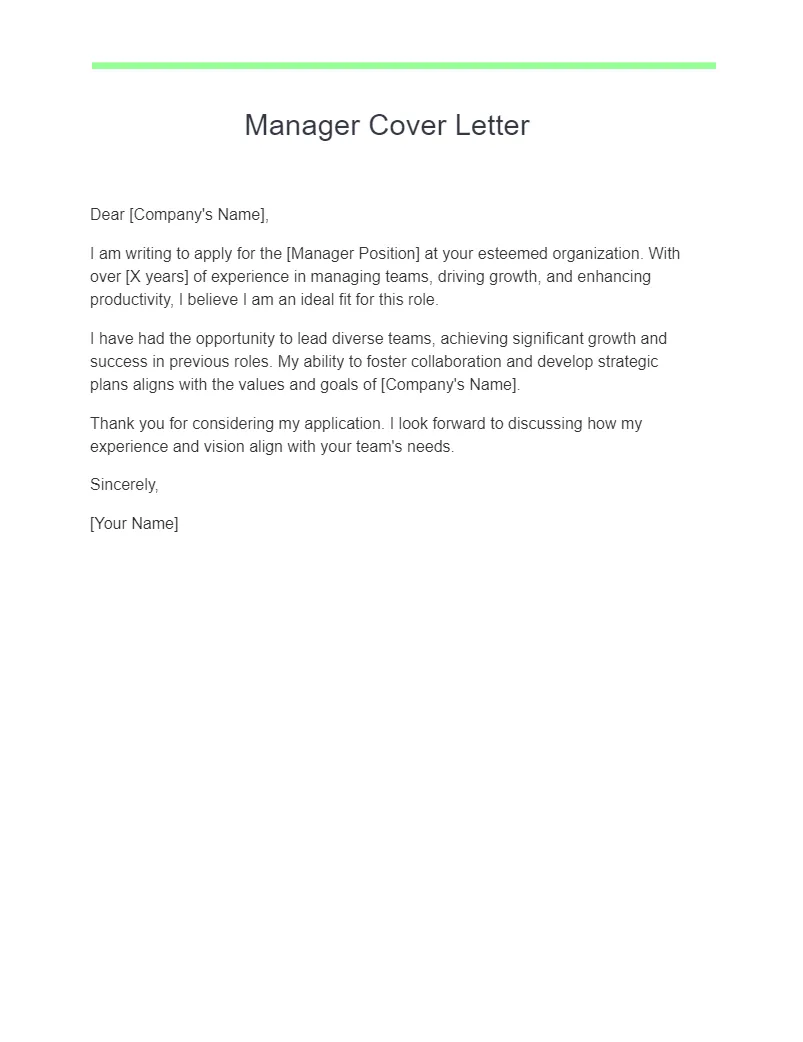
A project manager cover letter should highlight your experience in planning, executing, and closing projects. Emphasize your skills in budget management, risk assessment, and stakeholder communication. Include examples of successful project outcomes and how you have delivered projects on time and within budget. Mention your use of project management methodologies. Show how you’ve used different project management strategies, such as Agile or Waterfall, in previous projects. Highlight specific projects you have managed and the positive outcomes, such as meeting deadlines, reducing costs, or exceeding project goals. Focus on projects where you have taken complete ownership and demonstrated project management expertise. Quantify the results of your projects with numbers, using details such as percentages, or specific amounts to give value to your previous experiences.
Team Lead Cover Letter Sample
A team lead cover letter should focus on your leadership and team-building abilities. Showcase your experience in mentoring, motivating, and guiding teams. Emphasize your communication skills and ability to resolve conflicts. Provide examples of how you have improved team performance and fostered a positive work environment. Illustrate your ability to inspire and motivate team members. Highlight your ability to foster collaboration and promote a positive work environment. Showcase your skills in performance management, conflict resolution, and communication. Give an example of a time you improved a team’s performance by quantifying your actions. Include details about the metrics you used to measure success.
Operations Manager Cover Letter Sample
An operations manager cover letter should focus on efficiency, process improvement, and operational excellence. Emphasize your experience in streamlining processes, reducing costs, and improving productivity. Showcase your analytical skills and ability to solve operational challenges. Mention your experience with key performance indicators (KPIs) and how you have used them to drive improvements. Show how you can optimize processes to drive efficiency. Give examples of how you improved operations by streamlining processes. Show how you have implemented and improved operational strategies in previous roles. Provide quantifiable examples of your results, such as cost reductions, process improvements, and efficiency gains. Provide your experience with KPIs and how you have used them to improve operations.
Human Resources Manager Cover Letter Sample
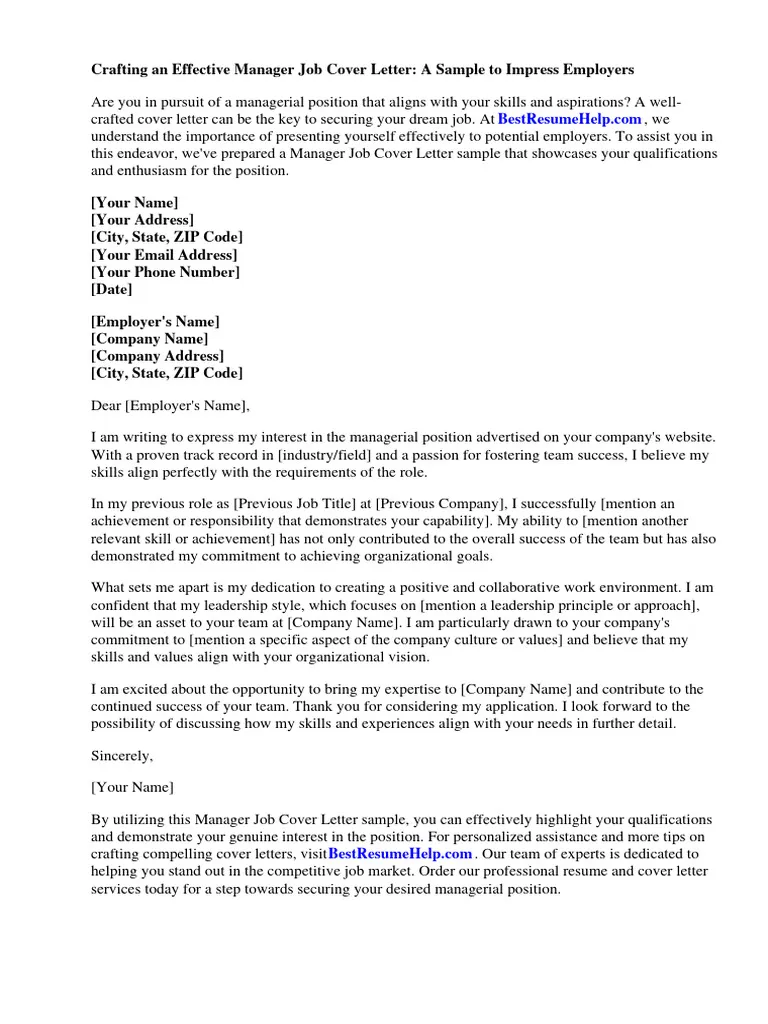
A human resources manager cover letter should emphasize your experience with recruitment, employee relations, and HR policies. Highlight your knowledge of employment laws and regulations. Showcase your ability to create and implement HR strategies that align with business objectives. Provide examples of how you have improved employee satisfaction and reduced turnover rates. Show your ability to align HR strategies with the overall business objectives. Provide examples of initiatives that improve the workplace. Showcase your experience with all aspects of HR, including recruiting, employee relations, and training. Emphasize your understanding of employment laws and HR regulations. Include specific examples of positive employee outcomes, such as reducing turnover and increasing satisfaction.
Tips for Writing a Strong Cover Letter
To write a compelling cover letter, follow a few key tips. Focus on clarity, conciseness, and relevance. Always customize your letter to the specific job and company. Make sure you highlight your skills and experiences. A strong cover letter will clearly explain why you’re a good fit for the role and the company. Following these guidelines will increase your chances of being invited for an interview. Paying attention to these details will provide you with an edge in the job market. To create a strong letter, follow these key tips and increase your chances of securing an interview.
Proofread Carefully
Always proofread your cover letter for any grammatical errors, typos, or inconsistencies. A polished and error-free cover letter demonstrates your attention to detail and professionalism. Have someone else review your letter as well, since a fresh pair of eyes can often catch mistakes that you might miss. Check all sections for accuracy. Proofreading is essential to making a good first impression. A well-written cover letter demonstrates that you take pride in your work and pay attention to detail. Small errors can make you appear careless. Taking extra steps to check your letter demonstrates that you’re committed to professionalism and accuracy.
Use Action Verbs
Use strong action verbs to describe your accomplishments and responsibilities. Verbs like ’led,’ ‘managed,’ ‘achieved,’ ‘implemented,’ and ‘developed’ make your cover letter more dynamic and engaging. Action verbs convey a sense of impact and dynamism. Using a variety of action verbs can make your cover letter more engaging and interesting to read. Avoid passive language. This helps paint a picture of your accomplishments and demonstrates your active participation in the job role. Using action verbs clearly demonstrates your achievements and makes your cover letter more engaging.
Keep it Concise
Keep your cover letter concise and focused. Aim for one page in length, and make sure every sentence serves a purpose. Get straight to the point and avoid unnecessary jargon or rambling. Brevity demonstrates respect for the hiring manager’s time. A concise cover letter shows that you can communicate effectively and are able to get your points across efficiently. By being succinct, you make it easier for the hiring manager to quickly assess your qualifications. Make every word count. Keep it under one page to maximize readability.
Format for Success
Use a clean and professional format. Choose a standard font (e.g., Times New Roman, Arial, Calibri) and ensure that the font size is easy to read (11 or 12 points). Use clear headings and spacing to organize your content. Use a professional format and ensure consistency throughout your cover letter. Proper formatting helps make your cover letter easy to read and highlights the key information. A well-formatted cover letter shows that you care about the details. Make sure your letter is visually appealing. Properly formatted letters are much more likely to make a strong positive impression.
Mistakes to Avoid in Your Cover Letter
Certain mistakes can significantly decrease your chances of getting an interview. Learn about these common pitfalls so that you can create a successful cover letter. Paying attention to these aspects can prevent potential issues. Avoiding these common mistakes is crucial to maximizing your chances of success. By avoiding these common errors, you can ensure that your cover letter is as effective as possible.
Overusing Clichés
Avoid using generic phrases and clichés. Phrases like ‘hardworking,’ ’team player,’ or ‘detail-oriented’ are overused and don’t provide any real value. These statements lack originality and can make your cover letter sound generic. Instead, provide specific examples that demonstrate your skills. They can also dilute your message. Highlighting unique achievements and using concrete examples are more effective. This will make your letter more memorable. Substituting clichés with concrete examples can show the real value that you add.
Writing Too Much Information
Keep your cover letter concise and focused. Don’t include irrelevant information or repeat everything from your resume. Tailor the content to the specific job requirements. Providing too much information can make the reader lose interest, and the key aspects of your qualifications may be overshadowed. It is also crucial to focus on the most relevant details to make your application stand out. Emphasizing your value is important in order to keep the reader’s attention. Keep your cover letter focused on the most important details. This is key to a good first impression.
Neglecting to Tailor the Letter
Ensure you customize your cover letter for each job application. Do not use a generic template. Show that you understand the company’s needs and how your skills and experience can benefit them. Customizing your cover letter allows you to highlight the specific aspects of your experience. This shows that you have spent time researching the role and are dedicated to the job. Customization helps you demonstrate how you have the skills the employer is searching for. This makes your application more likely to stand out. If you show that you take the time to tailor your application, this will show that you are dedicated to doing a good job for the company.
Where to Find More Cover Letter Resources
Several resources can help you write an outstanding cover letter. Utilize these resources to create a strong document that showcases your qualifications and lands you an interview. Explore online templates, career websites, and professional advice. Access a variety of templates and examples online. Career websites, such as LinkedIn, can provide articles, examples, and guidance on writing cover letters. Consult with career counselors or professional resume writers. These resources will help you refine your cover letter and give you the edge in your job search. They’ll help you to have a successful cover letter that demonstrates your skills.
